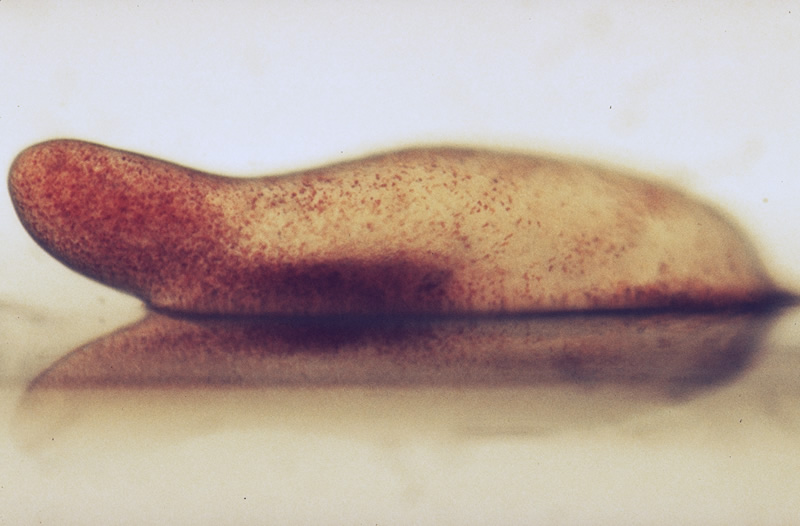Slime Molds and Computers

A slime mold about to form fruiting bodies
From the University of British Columbia Botanical Gardens
Yesterday, Gary Lee left a comment mentioning slime molds in conjunction with computers. Slime molds are some of the weirdest and most fascinating organisms that you are likely to run across. Unless you are in a lab, you are most likely to see them as slimy masses growing on bark or decaying vegetation. They are much more interesting than their humble appearance, however. Slime molds are social amoebae. Now, you might not think of amoebae as having much of a social life, but you'd be wrong.

Dictrostelium amoebae
From the National Institutes of Health
From the National Institutes of Health
Imagine, you are an amoeba oozing about on the forest floor, occasionally engulfing a tasty morsel but otherwise minding your own. Suddenly, you find that your food supply has dwindled. You feel lonely, unfulfilled (OK, I'm anthropomorphizing. Work with me here). You need the company of other amoebae. The others near you feel the same way. Slowly, you begin migrating towards on another and aggregating.

The slug-like phase of Dictyostelium
From the University of California at San Diego
From the University of California at San Diego
Eventually you come together and form a slug-like structure. What was once a group of independent, individual organisms is now a single multi-cellular organism, complete with a front and a back end.
The change continues. One end curls upwards and forms a stalk. A fruiting body forms at the tip, ripens, and releases tiny spores which hatch into a new crop of amoebae.
Slime molds, particularly Dictyostelium discoideum have been incredible tools for scientific discovery. They have been particularly informative in terms of their chemical signalling (the cues for when and where to come together during the aggregation phase), and the development of cell polarity. Their genome has recently been sequenced. I've never worked with them myself (beyond writing a term paper on the role of cyclic AMP in cell signalling back in the early 1980s). But I have always found them fascinating.
So what's the connection with computers? Back in the mid 1980s I was part of a group called GATES, the Gay Association of Technicians, Engineers, and Scientists. Leon, Gary Lee, and Gary Lee's partner were also members. In practice, the majority of the members were software developers, computer technicians (nobody referred to this as IT back then), and technical writers. Meetings were often dominated by talk of personal computers (which then could do considerably less than most cell phones and PDAs do today). I had little interest and eventually began changing the subject to slime molds every time people started talking about how much RAM they now had. My reputation stuck, although Gary Lee is one of the few people from those days whom I keep contact with.
Labels: Geekery



6 Comments:
Love the title to this. What an interesting post. I agree that the molds are quite unique forms and interesting at that. I noticed on your previous post that you haven't ever text messaged. Join the club. And I have to say your arguments as to why you don't are some of the same reasons I never have.
My friend Eric works at the U BC botanical garden (he does their blog, I think).
Very very interesting post .... I read the passages with great interest!!!!
I have been keeping very busy and updated my blog after a long hiatus ... I would request you to check out the names ...
even in the most nasty of things is a sense of wonder.
When I was an undergrad, our microbio prof gave each of us a slime mold for Christmas. I don't think mine lived very long.
Ben- Your microbio prof sounds like my kind of guy.
Post a Comment
<< Home